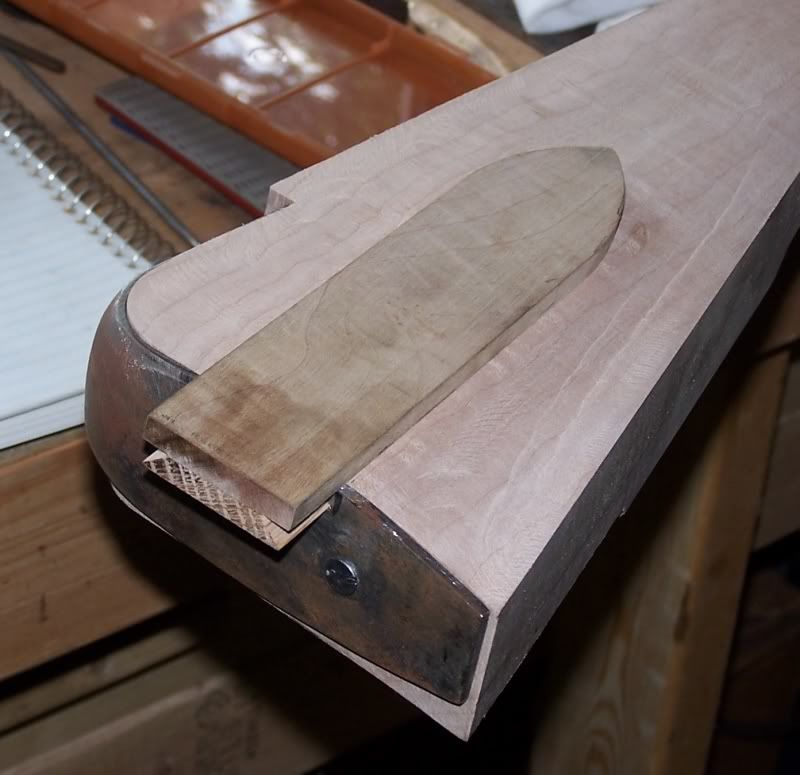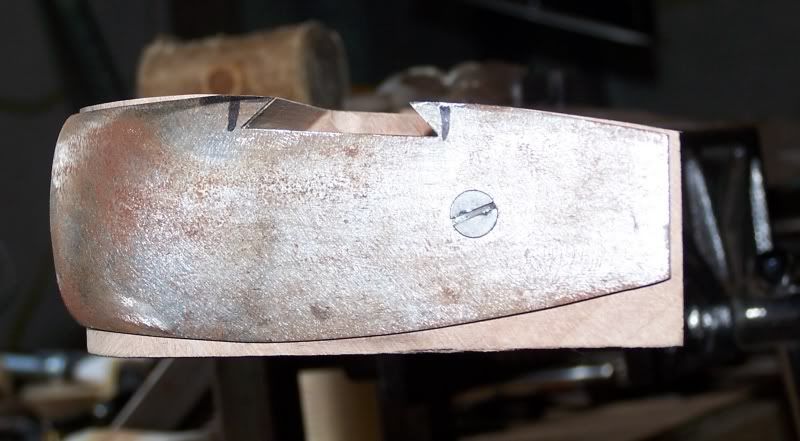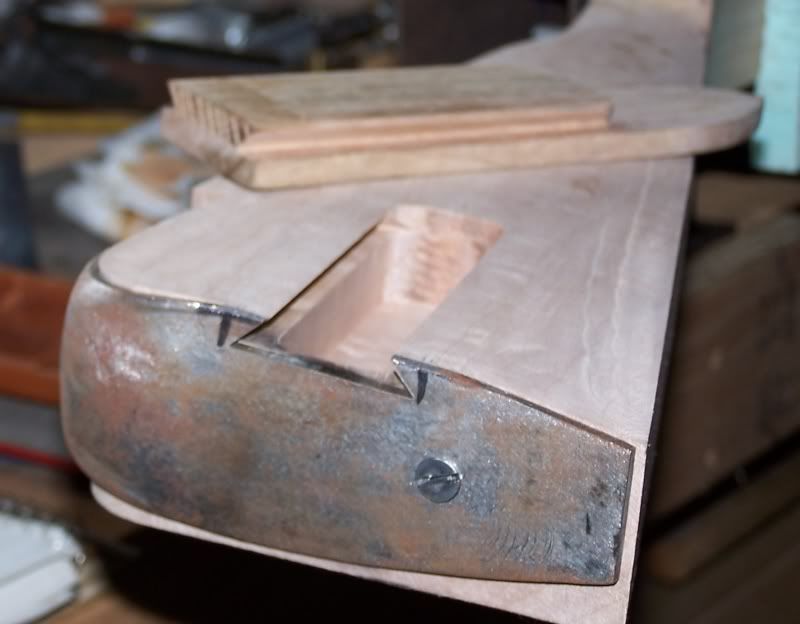At a gunshow a few years ago, I saw a true "barn gun" that was made from an old Brown Bess barrel, a 1760's English shallow-round faced lock, and assorted hardware. It had no buttplate, but had a sliding wood box. The lid was gone, and the bit of wood on the stock where the box would have latched was busted off (the gun was pretty well worn). By the way, it was also unstained (and probably was never even finished) and the wood was quite yellow from handling.
Here's how I make the wood boxes. First, I position everything on the stock, and flatten it off. And it needs to be FLAT all the way to the buttplate and a large enough area to catch all of the outer part of the box lid. Then I lay out the opening (making it slightly tapered) and drill it out and clean it all out and square it up. After that, I take a gauge and run it along each side of the opening and make a mark about a quarter inch or so, which indicates the bottom of the dovetail. The rest is done completely by eye. I will stab along this line with a chisel and then cut down from the top, and repeat until I get the dovetail cut out. Then I cut out the chunk of wood that's left and continue the dovetails out to the end. Put the buttplate on and cut out the dovetail in that to match the wood.
I make the lids from one piece. Years ago, when I started doing them, I made them from two pieces, thinking that surely it would be easier. Finally, I tried one out of one piece, and it is VASTLY easier. I try to cut the lid from the bit of wood that was beneath the lock are on the blank, but that isn't always possible, and I just have to get it from the top of the stock where I cut off for the barrel.
I make the piece of wood to match the taper of the dovetail in the stock, and a bit long, of course, and then take the same gauge that I used earlier and mark the bottom of the lid for the dovetail and chisel it out the same way. It's just a bit of hand fitting after that. After you've done a few, it gets pretty quick and easy, and can imagine that a wood box lid would be a pretty inexpensive option on a gun 250 years ago.
The spring catch can be made from just about any bit of steel the right size. An old door hinge pin or a 3/8" spike nail work fine. Just sawing and filing and a bit of forging will make your catch. There's so little travel in the spring that hardening and tempering aren't really necessary, but you can if you want to. Of course, you can buy a ready made latch.
The metal end cap (if you use one) I find to be the biggest pain in making a wood box lid. What I do is to fit the box lid to the stock and buttplate, filing off the end of the lid to match the contour of the buttplate, just as if I weren't going to use an endcap (don't fit the catch yet). Now, the end of the lid is the proper contour and I make the metal cap and fit it to the wood, screwing or nailing it in place. Now, the end cap won't be flush with the buttplate, so I then work down the lid, fitting it forward until it all matches up.
Hopefully that all made sense.



